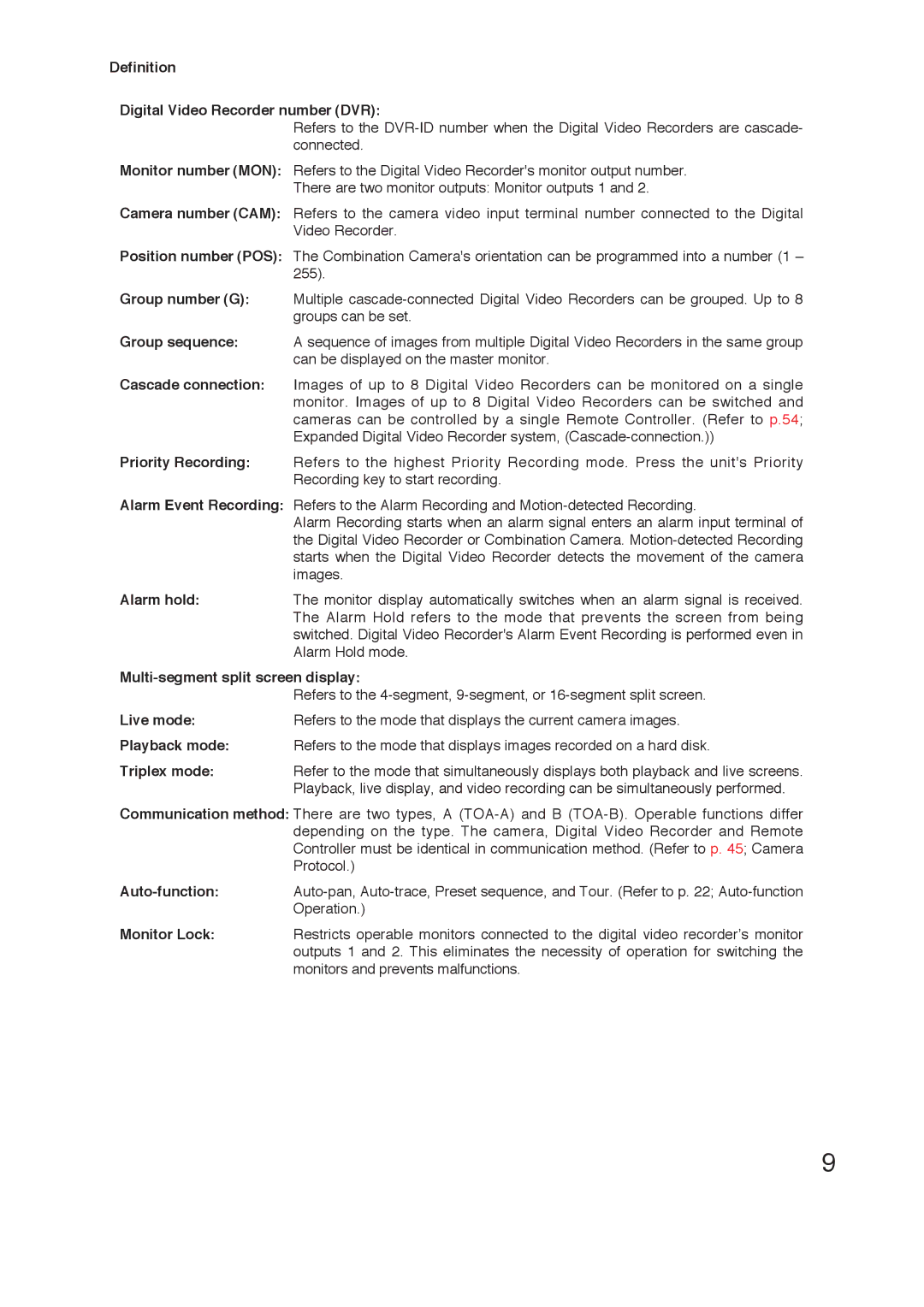Definition
Digital Video Recorder number (DVR):
Refers to the
Monitor number (MON): Refers to the Digital Video Recorder's monitor output number. There are two monitor outputs: Monitor outputs 1 and 2.
Camera number (CAM): Refers to the camera video input terminal number connected to the Digital Video Recorder.
Position number (POS): The Combination Camera's orientation can be programmed into a number (1 – 255).
Group number (G): Multiple
Group sequence: A sequence of images from multiple Digital Video Recorders in the same group can be displayed on the master monitor.
Cascade connection: Images of up to 8 Digital Video Recorders can be monitored on a single monitor. Images of up to 8 Digital Video Recorders can be switched and cameras can be controlled by a single Remote Controller. (Refer to p.54; Expanded Digital Video Recorder system,
Priority Recording: Refers to the highest Priority Recording mode. Press the unit's Priority Recording key to start recording.
Alarm Event Recording: Refers to the Alarm Recording and
Alarm Recording starts when an alarm signal enters an alarm input terminal of the Digital Video Recorder or Combination Camera.
Alarm hold:The monitor display automatically switches when an alarm signal is received. The Alarm Hold refers to the mode that prevents the screen from being switched. Digital Video Recorder's Alarm Event Recording is performed even in Alarm Hold mode.
Multi-segment split screen display:
Refers to the
Live mode:Refers to the mode that displays the current camera images.
Playback mode: Refers to the mode that displays images recorded on a hard disk.
Triplex mode: Refer to the mode that simultaneously displays both playback and live screens. Playback, live display, and video recording can be simultaneously performed.
Communication method: There are two types, A
Monitor Lock: Restricts operable monitors connected to the digital video recorder’s monitor outputs 1 and 2. This eliminates the necessity of operation for switching the monitors and prevents malfunctions.
9
